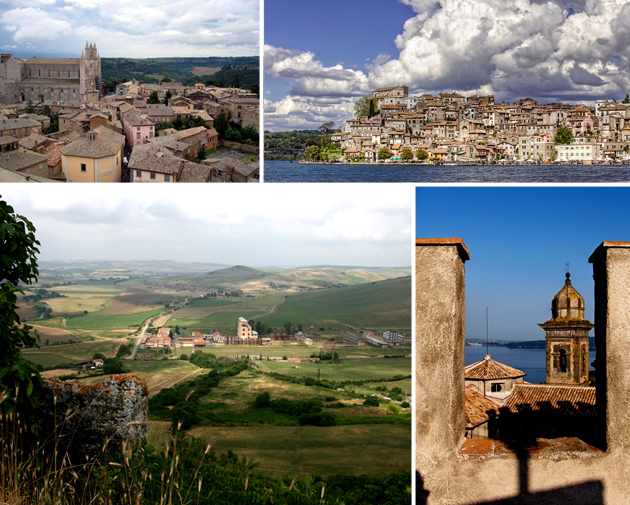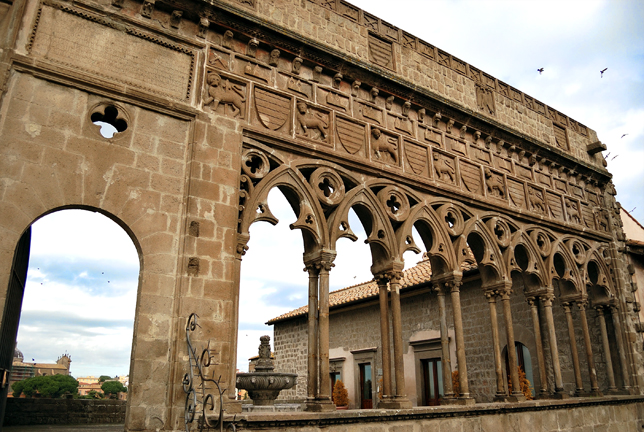
A visit to Rome can be overwhelming: It can take years to fully explore its city center, let alone its surrounding areas. While art lovers will enjoy getting lost in the plethora of immortal paintings scattered around the many museums and churches, history buffs will be dazzled wandering the same streets where Julius Caesar, Caligula and Augustus stepped some 2,000 years ago.
The intimidating breadth of attractions is probably why tourists seldom venture outside of Rome, sometimes convinced that next to nothing can be found beyond the mighty walls of the Eternal City, and thus consigning precious bits of Italian history to anonymity or only to local tourism. If you feel adventurous enough, try one of these three day jaunts to intriguing sites just outside the city.
Also known as “Rome’s sister” for being a papal residence in the Middle Ages, Viterbo makes for a wonderful daytime outing. From Rome’s city center, a direct train from the Trastevere or San Pietro stations will deliver you to Viterbo’s Porta Romana or Porta Fiorentina stations in an hour and a half. As soon as you come out of the platforms you’ll be confronted by the city’s walls; step through one of the imposing gates and be whirled back to the Middle Ages. An utterly fascinating area, San Pellegrino looks pretty much how it looked when Pope John XXI, the only Portuguese pope in Christian history, walked its narrow alleys in the 13thcentury.
Apart from the mandatory stroll around medieval Borgo San Pellegrino, other must-see sights are the Papal Palace, the Papal Thermal Baths and San Lorenzo Cathedral. Recent archaeological research has shed light on the city’s Etruscan origins with the discovery of 5 kilometers of subterranean pathway. Only 100 meters are open to the public, but it still gives visitors a taste of underground activities and rituals in ancient times.
Located next to one of the biggest and best-preserved Etruscan necropolises in the world, the city of Tarquinia is an absolute pearl for history buffs. It’s an hour-and-15-minute train ride from Roma Termini and then just a quick walk or bus ride to the necropolis. Declared a UNESCO World Heritage Site in 2004, the colossal cemetery is a precious testimony to pre-Roman Italy. The ancient funerary complex hosts some 140 beautifully painted tombs — out of the 200 scattered in central Italy — displaying the important role the death cult played in the fascinating and mysterious Etruscan civilization.
Once an Etruscan capital, then medieval hub and now internationally famous archaeological center, Tarquinia is also worth a visit for its Church and Monastery of San Francesco. Built in the 14th century, its Cathedral of Santa Margherita and the Church of Santa Maria of Castello are the city’s most important monuments of its medieval legacy.
A quaint town in Rome’s outskirts — and a 60-minute train ride from the San Pietro or Trastevere station in Rome’s city center, Bracciano is popular thanks to its gorgeous lake and its monumental castle, Castello Odescalchi. This medieval stronghold has been revamped into a busy Renaissance palace, chosen by many celebrities, first by Martin Scorsese and Isabella Rossellini, followed by Tom Cruise and Katie Holmes, as their wedding venue.
Downtown Bracciano’s Church of Santa Maria del Riposo is also a must-see stop where you can enjoy the 16th century architecture and a beautiful view of the lake. One of the widest in southern Italy, Lake Bracciano is the city’s heart and soul. Formed by volcanic activity, it laps the shoreline of two other villages, Anguillara and Trevignano, serving as the major draw for all three communities. If you’re a lover of outdoor activities, this is the best place to top off your Roman vacation, where you can indulge in long walks along the shoreline or have fun windsurfing, sailing, kayaking and sunbathing.
Photos Courtesy of Angela Corrias

